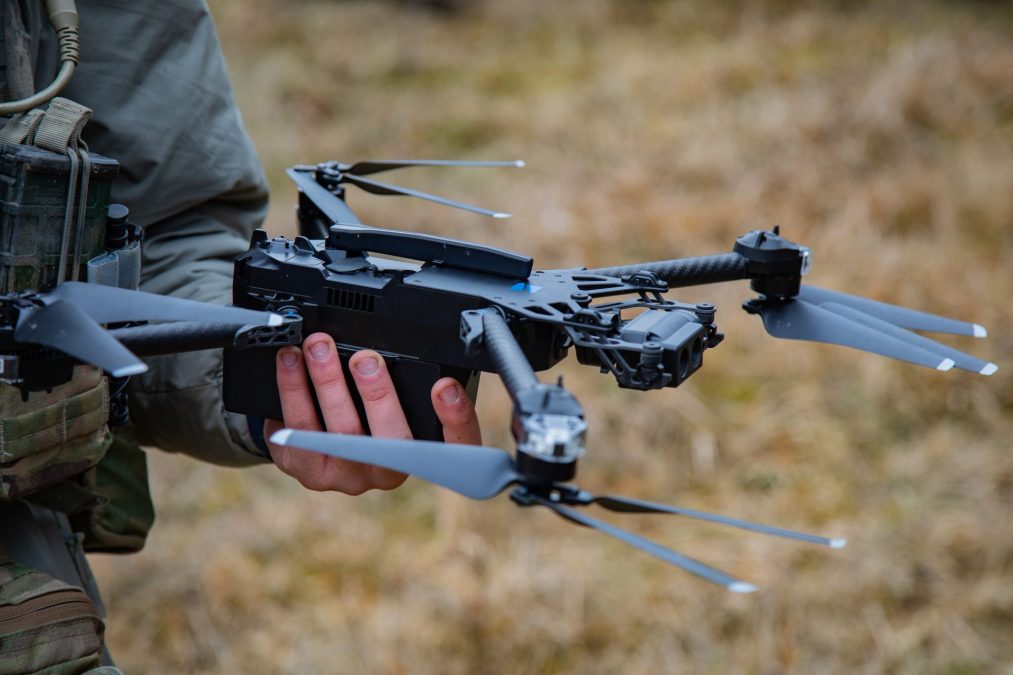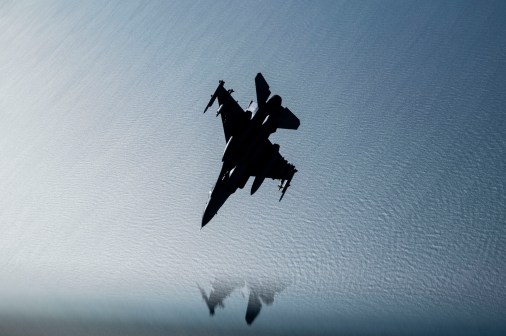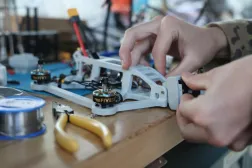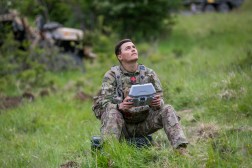Counter-drone system modernization ‘moving very slowly,’ 101st Airborne commander says

FORT CAMPBELL, Ky. — While a top priority for Army leaders, countering unmanned systems on the battlefield is presenting challenges and lagging behind other key modernization initiatives, according to the commander of the 101st Airborne Division, one of the service’s most elite and storied units.
“I’ll be very upfront with you, the counter-UAS piece is moving very slowly. That portion of it is one that has the chief of staff and the Army’s attention, and he is very aggressively getting after that,” Maj. Gen. Brett Sylvia told reporters during a visit to the division’s home at Fort Campbell, Kentucky, Feb. 26. “I think that there are things that will come soon, but as it stands right now, that was something that just hasn’t been as robust as some of the others.”
Counter-drone technology is one of three primary focus areas for Chief of Staff Gen. Randy George’s “transforming-in-contact” initiative, which aims to use deployments and troop rotations to test new equipment — mainly commercial off-the-shelf gear — that could allow units to be more responsive on a dynamic battlefield. The effort is also focused on UAS and electronic warfare.
The 101st Airborne Division’s 2nd Brigade was the first unit to go through its capstone training exercise with new tech as part of transforming-in-contact. As the Army shifts to the next iteration of the effort, the 101st is one of two full divisions that will be participating.
As such, the unit has been significantly involved in testing these technologies — with 2nd Brigade conducting its capstone event last summer — giving it important insight into these challenges.
The strategic landscape has changed significantly in the last few years, especially exemplified by the Ukraine-Russia war, highlighting the need to rapidly adopt new capabilities such as drones and counter-drone systems.
“If you look at what’s happening over there in Ukraine, [there are] tens of thousands of uncrewed systems that are flying every single day,” Sylvia said. “This idea of being able to hide out there on the battlefield through just standard camouflage is becoming much more difficult.”
Sylvia explained that part of the challenge of countering drones is dealing with the complex airspace where those systems are flying around, presenting unique command-and-control problems.
“If you look at what’s happening in Ukraine, they are literally shooting down thousands of their own drones every day because it is so difficult for them to be able to identify friend or foe,” he said.
While there are several concepts to defeat these systems — such as kinetic, non-kinetic and even drone-on-drone attacks — the Army needs an effective C2 tool to manage all those platforms.
Sylvia alluded to the fact the service is taking a look at some of these technologies and moving aggressively toward a desired capability.
In fact, Army officials explained that they are working with the Defense Innovation Unit for forthcoming awards for a command-and-control system to replace the Forward Area Air Defense Command and Control, a tool that integrates a variety of sensors and capabilities to shoot down airborne threats. DIU last year issued solicitations for what it’s calling the Forward Counter Unmanned Aircraft Systems Command and Control System.
“The entire point there is we want to be able to bring in acoustic sensors and small radars, we want to actually do formation-based defense,” Alex Miller, chief technology officer to the chief of staff, told reporters last month. “How do you take a platoon, rather than just thinking about point defense and bases in the National Capital Region, and how do you let them do self-defense automatically with any sensor, any effector?”
Sylvia noted that while there are interceptors that currently exist, it’s important to win the cost-curve battle when it comes to defeating UAS — not expending costly munitions to defeat hundred-dollar drones — while also enabling smaller units to defend themselves.
“Counter-UAS is a very difficult problem because it requires this very layered approach … It’s a hundred-to-one ratio in terms of what you spend … on a missile to take something down versus what it costs to develop that drone,” he said. “You’ve got to have small systems in order to be able to take care of small threats. But you still have to have high-end systems to take care of high-end threats. How do you do all of that at echelon in order to be able to provide the support that you need at each one of these?”
One reason why counter-UAS systems are much slower for the military to field than UAS, according to Sylvia, is that there isn’t as large of a commercial market that officials can access.
“On the UAS side, there’s a tremendous commercial capability that already exists out there. There’s already a ton of innovation and things that are taking place commercially that then you can tap into for military application. The same does not exist on the counter-UAS side,” Sylvia said. “There wasn’t this huge fora of counter-UAS developers that we could easily tap into. I think it was always going to be a much greater challenge because it’s a smaller ecosystem than the other one.”






